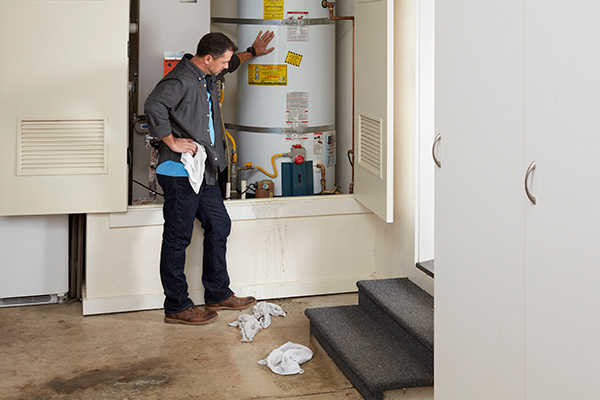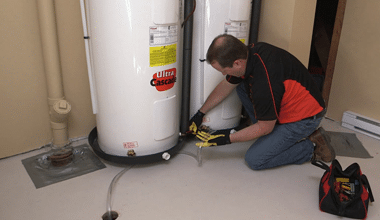Here below you will find a lot of good insights around Maintaining & Draining a Water Heater.

Whether it lies in the basement or a different area, damaged water heaters can cause anxiety. A conventional unit holds 80 gallons, so an overnight leakage will bring about a flood. This leads to major building damages with soaked wall surfaces and also floors. Besides, having no warm water supply is additionally bothersome. If you are managing these problems, make note of the following:
Call the Plumber
After doing the initial two security actions, you have to call your plumber to come right away to repair a fractured hot water heater. Remember that your system will not just conk out significantly overnight. There are normally signs that your aging hot water heater has debris build-up in the inside. Make note of the following:
Do not await significant flooding to call the plumber. By then, you will have to invest even more to restore your residential or commercial property. Instead, as soon as you find these indications, have actually a professional concerned inspect your water heater storage tank. Generally, water heaters have a life-span of regarding 8 to 12 years. With regular assessment and upkeep, you can prolong its life.
Cut Off the Cold Water Supply
Cut off the tanks faucet water supply from the source. This goes from your main water line into the storage tank. When your storage tank remains in good condition, the cold water quits filling up when the storage tank is full. Since it is dripping, the water will continue to flow. Shut the valve discovered on top of the heating unit. Turn this clockwise to close it off. You have to transform off that main water supply line outside your residential or commercial property if you can not find it or reach it.
Turn Off Source Of Power
Prior to calling the plumber, closed off a gas water heating system by turning the temperature level dial. This will stop electrocution, specifically if there is a leak as water is a conductor. Generally, the heating element closes off when the water strikes a details temperature level.
Clean Up Home
After calling the plumber, document damages by taking notes and also images so you can assert your house owner's insurance coverage. Eliminate any standing water to stop mold as well as mildew development. If you have a submersible water pump, make use of that to drain pipes the water.
Remember, if you discover any kind of issues with your water heater, call the pros immediately. You can not take this problem lightly because a defective thermostat can elevate water temperature to a hazardously high degree, resulting in unintentional burns. A damaged heater pressure relief valve can additionally trigger a surge. For ideal results, obtain a yearly check so your unit gets examined, cleaned, drained, and filled up, assuring optimal performance.
After doing the first 2 safety actions, you should call your plumber to come right away to take care of a ruptured water heating unit. Rather, as quickly as you detect these signs, have actually a professional come to evaluate your water heating system storage tank. Prior to calling the plumber, closed off a gas water heating system by turning the temperature dial. If you have a submersible water pump, utilize that to drain pipes the water. Bear in mind, if you discover any kind of concerns with your water heater, call the pros right away.
8 REASONS YOUR HOT WATER HEATER IS NOT WORKING & HOW TO FIX
Water Heater Problems & Solutions
Loose or Damaged In-Line Valve
Unlike a water leak near the bottom of your water tank, a water leak on top of your system can be easily fixed. A common cause of water tank leaks includes a loose in-line valve. This is a handle that is located at the top of the water tank that is engineered to activate or deactivate the flow of water. To fix this problem, you will need to secure the nut that holds the ball or in-line valve in its location. If the leak becomes more severe once it is tightened, you will be required to travel to your local hardware store to purchase a new in-line valve for your water heater.
Damaged Pressure Relief Valve
Most types of water heaters are equipped with a pressure relief valve that is engineered to discharge pressure from the water tank when it becomes too high. If this valve on top of your water heater begins to leak, we recommend purchasing a new one online or from your local store. The process of removing and replacing pressure relief valves is not complicated.
No Warm Water
If you have an electric water heater in your home, the most typical cause of a lack of warm water is a broken heating element. Your water heater is equipped with two heating elements that are tasked with heating incoming water in the water tank. Once a heating element begins to malfunction, you will have little to no hot water to use for showering, cleaning, and laundry.
Low Supply of Hot Water
Are you continuously running out of warm water? This issue may be a byproduct of a cracked dip tube. This tube is engineered to push cold water to the base of your water tank to be heated. Once a crack or hole begins to form in the dip tube, the incoming supply of cold water may be released near the top or middle of your tank. As a result, the cold water on top of the tank will be sent to the faucets and showers in your house. This hot water heater problem can only be fixed by replacing the dip tube on your system. Since the process of installing a new dip tube is complex, we recommend calling a certified technician for help.
A low supply of warm water may also be a signal of excess sediment buildup in your water tank. As your water heater reaches the middle of its life cycle, minerals in water including magnesium and calcium will begin to collect at the base of the water tank. As the minerals continue to grow, there will be less room in the water tank to store hot water. To resolve this problem, flush your water heater to remove the excess minerals.
Water is Too Warm or Cold
If the water in your shower feels uncomfortable hot or cold, you can adjust the temperature of your water by changing the settings on your thermostat. Setting the temperature to 120 degrees Fahrenheit may help you save money on your utility bills. This is an excellent temperature to use if you’re worried about scalding or skin irritation. Does this temperature feel too cold? You may also adjust the thermostat to 140 degrees Fahrenheit to make your showers more pleasant. If your hot water heater is not working when you change the temperature, this is an indicator of a broken thermostat. Immediately find a certified plumbing or heating contractor in your area to repair or replace your thermostat.
Low Water Pressure
Low water pressure is not always caused by a malfunctioning water heater. If you live in an older home with smaller water pipes, the flow of water will be restricted prior to reaching our kitchen or bathroom skins. The only way to eliminate this hot water heater problem is to connect new ¾-inch water lines to your system. Another type of problem that may negatively impact your water pressure includes calcium deposits in water pipes.
As magnesium and calcium begin to form in your pipes, the diameter of your water lines will become smaller. As a result, the warm water from your water heater will not be able to travel in an efficient manner to your sinks or appliances. Since the process of replacing water pipes includes removing drywall, an average homeowner that does not have a plumbing license will not be able to fix this hot water heater problem.
https://www.wmhendersoninc.com/blog/8-reasons-your-water-heater-is-not-working-how-to-fix/

Do you like more info about Water Heater Burst? Create a remark directly below. We'd be interested to see your thinking about this blog post. We are looking forward that you visit us again before long. If you appreciated our page plz don't forget to share it. We truly appreciate reading our article about What Do You Do When Your Water Heater Bursts?.
Schedule A Service